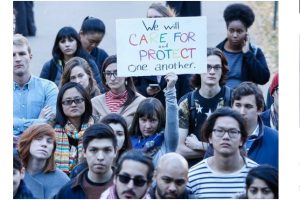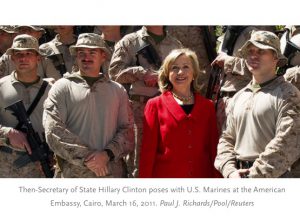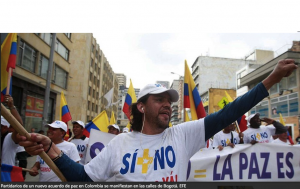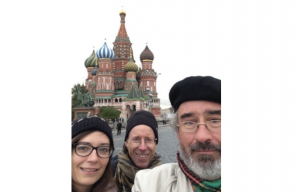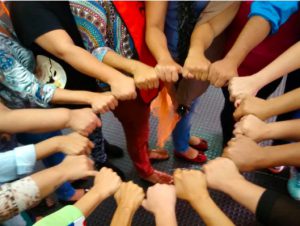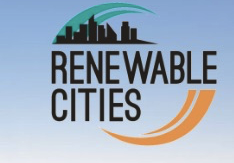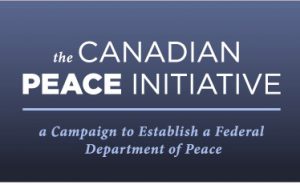…. HUMAN RIGHTS ….
An article from RT.com
In the wake of Donald Trump’s election to president and his threat to crackdown on illegal immigrants, Mayors in Boston, Chicago, Los Angeles and New York have re-affirmed their pledge to continue their policies to fight deportation efforts by the federal government under the description ‘sanctuary cities.’

The mayor of Chicago says”Chicago always will be a sanctuary city.”
In a “60 Minutes” interview, his first as president-elect, Trump confirmed his campaign pledges to immediately deport 2-3 million illegal immigrants with a criminal record. “What we’re going to do is get the people that are criminal and have criminal records, gang members, drug dealers, where a lot of these people, probably 2 million, it could be even 3 million, we are getting them out of our country,” Trump told CBS.
Those remarks and threats made during his campaign to end “sanctuary cities” prompted city officials up and down the country to reiterate their roles to provide sanctuary for immigrants.
Los Angeles Mayor Eric Garcetti told the Los Angeles Times he avoids the phrase “sanctuary city” and argues it is “ill defined.” “We cooperate all the time with federal immigration officials when there are criminals that are in our midst and need to be deported,” Garcetti told the LA Times. “With that said, we’re a very welcoming city, where are law enforcement officers and LAPD don’t go around asking people for their papers, not should they.”
Los Angeles Police Chief Charlie Beck said on Monday his department had no plans to get involved in any deportation efforts and would continue its police against allowing officers to stop people solely to learn their immigration status.
Mayors in Chicago, Boston and New York have also reaffirmed their stance on federal immigration deportation.
“You are safe in Chicago. You are secure in Chicago. You are supported in Chicago,” Chicago’s Mayor Rahm Emanuel said on Monday, according to WGN News. “Now administrations may change but values and principles as it relates to inclusion do not.”
“Chicago always will be a sanctuary city,” he added.
(Article continued in the right column)
The post-election fightback for human rights, is it gathering force in the USA?
(Article continued from the left column)
A city typically gains ‘sanctuary’ status upon passing an ordinance prohibiting city officials and police from inquiring about a person’s immigration status. Los Angeles became the first such sanctuary city in 1979.
Boston’s Mayor Marty Walsh said the day after the election he would work to protect the city’s illegal immigrants, and is “not letting anybody change the policies in the city of Boston” with regard to pathways to citizenship.
San Francisco went further and refused to cooperate with federal immigration officials. It declared itself a sanctuary city in 1989, and strengthened their stance in 2003 with its “Due Process for All” ordinance. The law declared local authorities could not hold immigrants for immigration officials if they had no violence felonies on their records and did not currently face charges.
According to the Center for Immigration Studies, a non-profit group that advocates for the strict enforcement of immigration laws, there are roughly 300 “sanctuary” jurisdictions around the country.
There are an estimated 11 million immigrants in the country without legal status.
Many took advantage of the Deferred Action for Childhood Arrivals (DACA) program which the Obama administration passed through executive action which provided a work permit and deportation reprieve to people who were brought to the US as children and stayed illegally.
Not everyone agrees with the stance taken by leading urban city mayors. “It’s no secret that these criminal illegal aliens and terrorists are looking for places to go where they are least likely to be caught,” Bristol County Sheriff Thomas Hodgson told CBS Boston. He says sanctuary cities are breaking federal law. “What’s really troubling about this is that any elected official in this country would suggest that there should be a certain class of people who do not have to abide by our laws,” Hodgson said.
On a federal level there were moves last year to penalize law enforcement and municipal governments for their stance on immigration. Democrats in the Senate blocked a bill by Senator David Vitter (R, Louisiana) which would have stopped law enforcement funding and community development grants to states and cities that didn’t hold immigrants for federal immigration officials.
